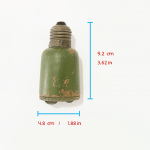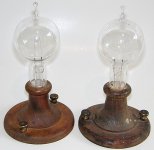He has a small collection of the "weird and unusual" and is thinking about bidding on this for this collection.
https://www.ebay.com/itm/Antique-Vi...a=1&pg=2060778&_trksid=p2060778.c100290.m3507
https://www.ebay.com/itm/Antique-Vi...a=1&pg=2060778&_trksid=p2060778.c100290.m3507
Amazon Forum Fav 👍
As an eBay Associate we earn from qualifying purchases.







